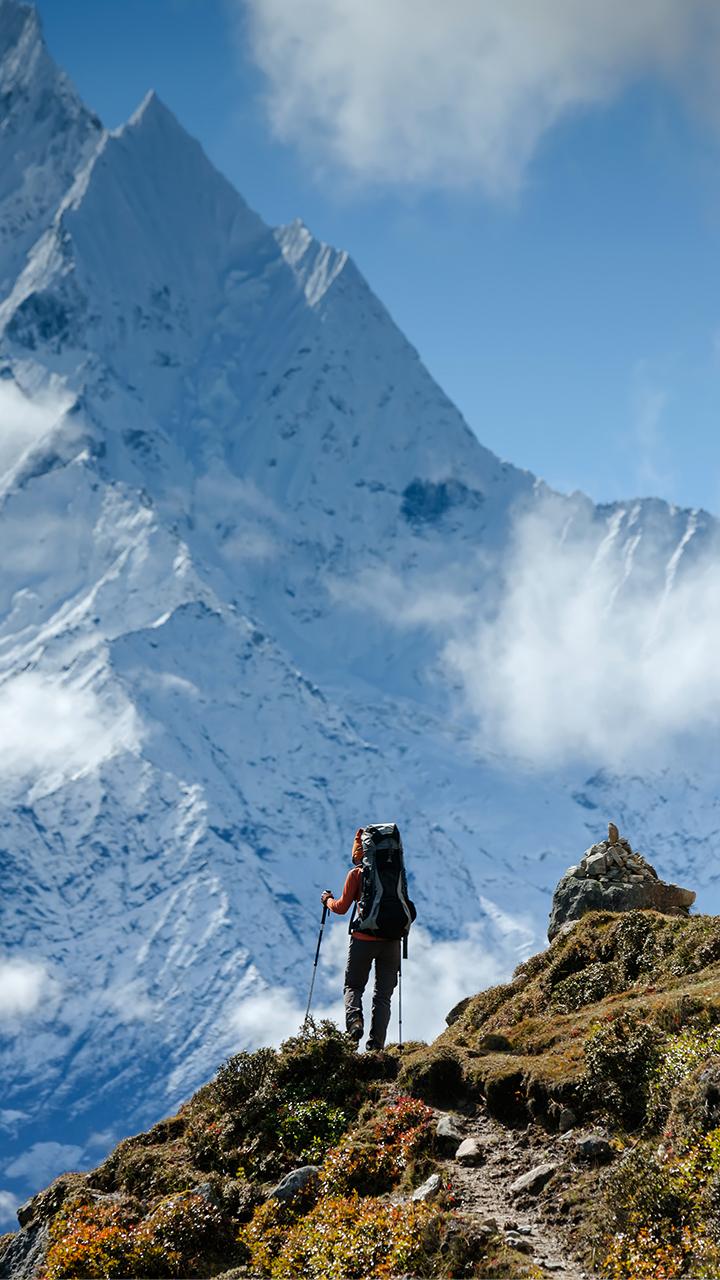Trekking in the Himalayas
Trekking is the best therapy to escape from the fakeness of this world. If you want to enjoy the beauty of silence, then go to the mountains.

Trekking in the Himalayas is an unforgettable experience that can challenge both the mind and body. The majestic Himalayan mountain range stretches for thousands of kilometers across several countries in Asia, including Nepal, India, Bhutan, and Tibet. The Himalayas are home to some of the world's highest peaks, including Mount Everest, which stands at a staggering 8,848 meters (29,029 feet). The region offers a wide variety of trekking routes, from beginner-friendly trails to challenging high-altitude routes that require technical skills and experience.
Before embarking on a trek in the Himalayas, it is important to understand the challenges that come with hiking at high altitudes. Altitude sickness is a common concern for trekkers, as the lower air pressure at high altitudes can cause symptoms such as headaches, nausea, and shortness of breath. It is important to acclimatize properly by ascending gradually and allowing time for the body to adjust to the altitude. Trekkers should also be physically fit and prepared for long days of hiking, as some routes can require several hours of walking each day.

One of the most popular trekking routes in the Himalayas is the Everest Base Camp trek, which takes trekkers through picturesque Sherpa villages, Buddhist monasteries, and breathtaking mountain vistas. The trek starts in the town of Lukla, accessible by a short flight from Kathmandu, and takes around two weeks to complete. The trail follows the Dudh Koshi River, passing through Namche Bazaar, the gateway to the Khumbu region. Along the way, trekkers can visit the Tengboche Monastery, one of the most important Buddhist monasteries in the region, and take in views of some of the highest peaks in the world, including Mount Everest, Lhotse, and Nuptse.
Another popular trekking route in the Himalayas is the Annapurna Circuit, which takes trekkers through diverse landscapes ranging from lush forests to arid high-altitude deserts. The trek starts in the town of Besisahar, accessible by road from Kathmandu, and takes around two to three weeks to complete. The trail follows the Marsyangdi River, passing through traditional Nepali villages and offering views of the Annapurna and Dhaulagiri mountain ranges. Trekkers can also visit the holy Hindu temple of Muktinath, which is believed to bring blessings and good fortune.

For those looking for a more challenging trek, the Everest Three Passes trek offers a high-altitude adventure that takes trekkers through three mountain passes over 5,000 meters (16,400 feet) in elevation. The trek starts in Lukla and takes around three weeks to complete. The trail passes through remote Sherpa villages, high-altitude lakes, and stunning mountain scenery, including views of Mount Everest, Lhotse, and Cho Oyu.
When trekking in the Himalayas, it is important to be prepared for the weather conditions, which can vary greatly depending on the season and altitude. The best time to trek is during the spring and fall, when the weather is generally clear and dry. Winter treks can be challenging due to the cold temperatures and snow, while summer treks can be affected by monsoon rains and landslides.

Trekking in the Himalayas is an opportunity to immerse oneself in a unique culture and landscape, and to push one's limits in a beautiful and awe-inspiring environment. However, it is important to approach trekking with caution and respect for the natural surroundings, as well as to ensure that one is properly prepared and informed about the challenges and risks involved. With the right preparation and mindset, trekking in the Himalayas can be a life-changing experience that offers a sense of accomplishment and a deeper appreciation for the natural world.
When planning a trek in the Himalayas, it is important to choose a reputable trekking company or guide who can provide the necessary support and expertise. Trekking with a guide can also offer valuable insights into the local culture and customs, as well as ensure safety and security along the trail. Many trekking companies offer customizable itineraries to suit different preferences and abilities, as well as options for group or private treks.

In addition to the physical and mental challenges of trekking in the Himalayas, there are also cultural and environmental considerations to keep in mind. The Himalayan region is home to diverse ethnic and religious groups, each with their own traditions and customs. Trekkers should be respectful of local customs and dress modestly, especially when visiting religious sites. It is also important to minimize one's impact on the environment by practicing responsible trekking techniques, such as carrying out all trash and avoiding single-use plastics.
Trekking in the Himalayas offers a unique opportunity to connect with nature, challenge oneself, and explore a rich and diverse culture. Whether embarking on a beginner-friendly route or a high-altitude adventure, the experience of trekking in the Himalayas is sure to be unforgettable. With proper preparation, respect for the environment and local culture, and a sense of adventure, trekkers can embark on a journey of a lifetime in this majestic mountain range.
About the Creator
Sujan Paudel
I love to write. And in a hunt for a platform to express my feelings, I have arrived in Vocal Media. Let's see where this journey takes me from here.






Comments
There are no comments for this story
Be the first to respond and start the conversation.